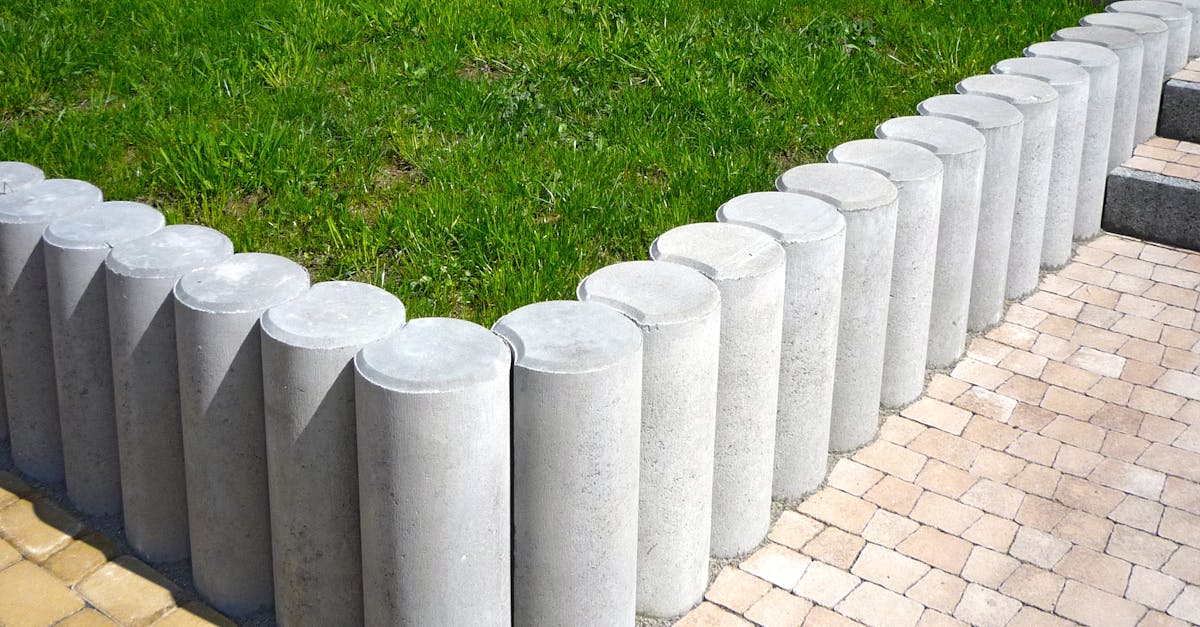
Table Of Contents
Safety Considerations for DIY Lawn Aeration
When opting for do-it-yourself (DIY) lawn aeration, safety should be a top priority. Before beginning the aeration process, it is crucial to clear the lawn of any debris like rocks, sticks, or toys that could pose a hazard. This preparation step helps prevent damage to both the aerator equipment and potential injury to the user or bystanders. Additionally, it is essential to carefully read and follow the manufacturer's instructions for the aerator to ensure safe and effective operation. Be sure to wear appropriate protective gear, such as gloves, goggles, and sturdy footwear, to safeguard against any potential accidents during the Lawn Care process.
Furthermore, when using a power aerator for DIY lawn aeration, it is important to be mindful of the electrical cords or fuel source to prevent tripping hazards or accidental spills. Always keep children and pets at a safe distance from the work area to avoid any unforeseen incidents. Lastly, remember to power off the equipment and wait for it to completely stop before attempting to make any adjustments or maintenance. By prioritizing safety precautions and following proper procedures, DIY lawn aeration can be a beneficial and rewarding task for maintaining a healthy and vibrant lawn.
Personal Protective Equipment
When considering DIY lawn aeration, it is crucial to prioritize personal protective equipment to ensure your safety throughout the task. Before beginning any lawn care activity, it is recommended to wear sturdy gloves to protect your hands from debris, sharp objects, or blisters that may occur during the aeration process. Additionally, wearing closed-toe shoes with good traction can help prevent slips and falls while operating aeration equipment in your yard.
Furthermore, wearing safety goggles is essential during lawn aeration to shield your eyes from flying debris, dust, or small rocks that may become airborne. Lawn care involves various tools and equipment that can potentially cause harm if not handled with caution. Ensuring that you are adequately protected with the appropriate personal protective equipment not only safeguards you from potential injuries but also allows you to focus on achieving the desired results in your lawn aeration efforts.
LongTerm Effects
When considering the long-term effects of lawn aeration, it is essential to evaluate the impact on overall soil health. Proper aeration allows for better water penetration, nutrient absorption, and root development. Over time, these benefits can lead to a stronger, healthier lawn that is more resilient to stressors like drought or disease. Whether you choose to aerate your lawn yourself or hire a professional, the long-term effects on soil health play a significant role in the overall success of your lawn care regimen.
Additionally, the frequency of aeration can greatly influence the long-term health of your lawn. Aeration is not a one-time fix but rather an ongoing process that should be incorporated into your lawn care routine. By understanding the seasonal timing and recommendations for DIY versus professional aeration, you can make informed decisions to ensure that your lawn remains vibrant and healthy in the long run.
Soil Health
When considering the soil health of your lawn, there are crucial factors to bear in mind for the well-being of your grass and plants. Properly aerated soil allows for better water penetration, root growth, and overall nutrient absorption. Aerating your lawn, whether through DIY methods or with the help of a professional service, can significantly impact the quality of your soil. By alleviating compaction and promoting healthier soil, you set the foundation for optimal Lawn Care maintenance and growth.
Moreover, healthy soil fosters a balanced ecosystem underground, providing an environment where beneficial microorganisms thrive. These microorganisms contribute to breaking down organic matter, releasing nutrients, and enhancing soil structure. Consequently, by promoting soil health through aeration, you are not only aiding the visible aspects of your Lawn Care, but also nourishing the hidden network that sustains the vitality of your lawn over time.
Frequency of Aeration
When considering the frequency of aeration for your lawn care routine, it's essential to factor in variables such as soil compaction, grass type, and overall lawn health. Professionals often recommend aerating cool-season grasses, like fescue or bluegrass, once a year during the early fall or spring. Warm-season grasses, such as Bermuda or Zoysia, can benefit from aeration once every 1-3 years, usually during late spring or early summer to coincide with their peak growing season.
For DIY enthusiasts, the frequency of aeration can vary based on the condition of the lawn. If your soil becomes compacted easily due to heavy foot traffic or equipment use, more frequent aeration may be necessary. Observing your lawn's response to aeration can guide your decision-making process; signs of improved water penetration, enhanced root growth, and increased nutrient uptake indicate that your lawn may benefit from more frequent aeration sessions. Aim to strike a balance between providing your lawn with the necessary care it needs and avoiding excessive aeration that can stress the grass and soil structure.
Seasonal Timing
When considering the seasonal timing for lawn aeration, it's essential to align the task with the specific needs of your grass and soil. Most lawn care experts recommend aerating cool-season grasses like Kentucky bluegrass and fescue in the early fall. This timing allows the grass to recover quickly from the aeration process before winter dormancy sets in. On the other hand, warm-season grasses such as Bermuda grass and Zoysia grass benefit most from aeration in the late spring to early summer when they are actively growing and can utilize the newly created openings for optimal root development.
Choosing the right season for aerating your lawn plays a significant role in determining the success of the process. By timing aeration correctly based on the type of grass you have, you can ensure that your lawn reaps the maximum benefits in terms of improved soil structure, enhanced nutrient absorption, and overall better health. Prioritizing seasonal timing in your lawn care routine can lead to lush, thriving grass that not only looks beautiful but also stands strong against weeds, diseases, and other stressors.
FAQS
Is DIY lawn aeration safe?
DIY lawn aeration can be safe if proper precautions are taken, such as wearing appropriate personal protective equipment and following safety guidelines.
What personal protective equipment should I use for DIY lawn aeration?
It is recommended to wear sturdy shoes, safety goggles, and ear protection when performing DIY lawn aeration to prevent injuries from flying debris and loud machinery.
What are the long-term effects of DIY vs. professional lawn aeration on soil health?
Professional lawn aeration may provide more consistent and effective results in improving soil health over time compared to DIY methods, as professionals have the expertise and equipment for optimal aeration.
How often should I aerate my lawn, and what are the recommendations for DIY vs. professional aeration?
The frequency of lawn aeration depends on various factors such as soil type and grass species. Professionals may recommend aeration annually or bi-annually, while for DIY aeration, it is advisable to follow specific guidelines based on the condition of your lawn.
When is the best time to aerate my lawn, and how does DIY timing compare to professional recommendations?
The best time to aerate your lawn is typically during the growing season when the grass can recover quickly. Professionals may recommend aerating in the spring or fall, while DIY timing should align with the specific needs of your lawn based on factors like soil compaction and root health.


